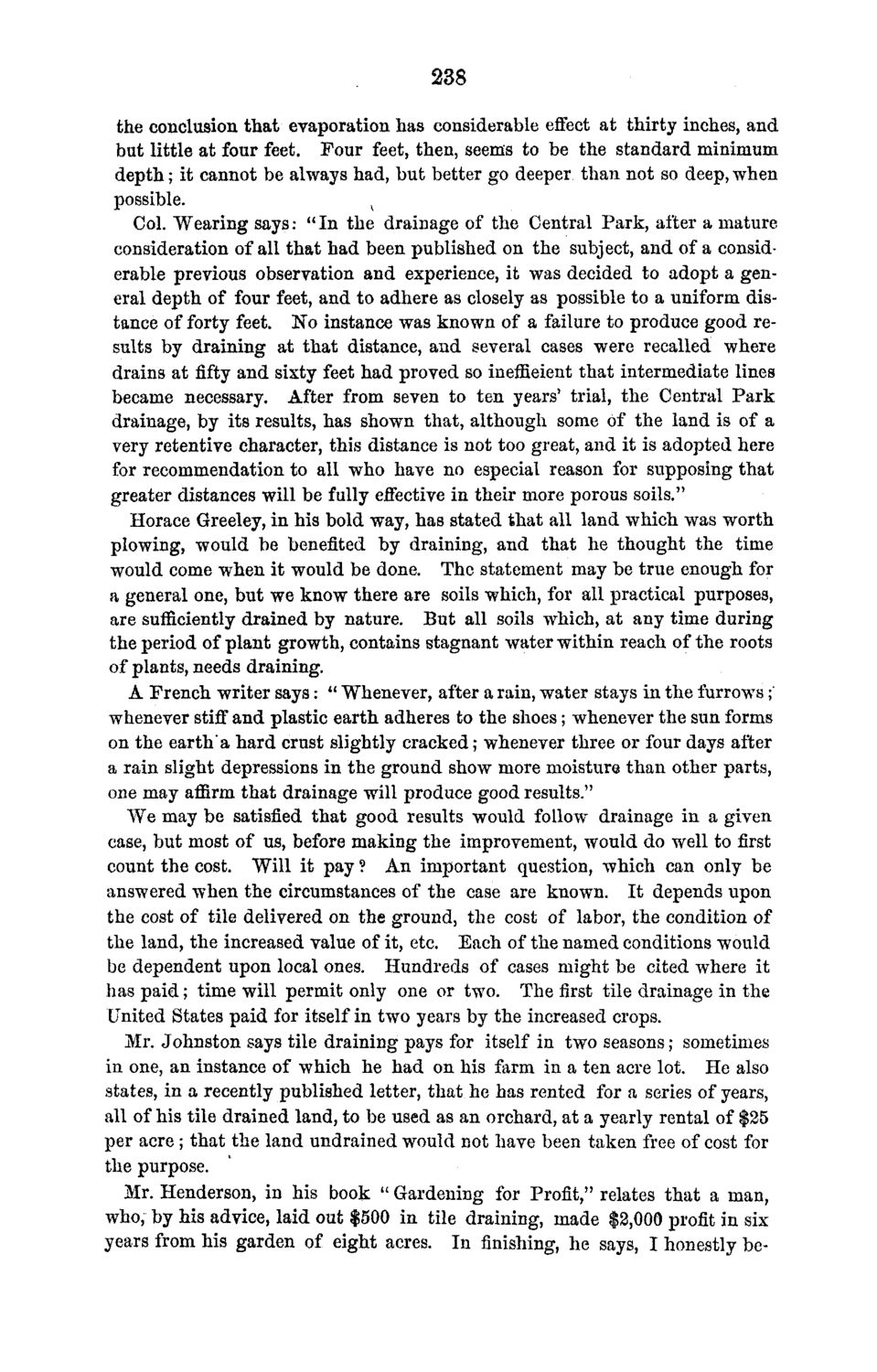| |
| |
Caption: Board of Trustees Minutes - 1870
This is a reduced-resolution page image for fast online browsing.

EXTRACTED TEXT FROM PAGE:
238 the conclusion that evaporation has considerable effect at thirty inches, and but little at four feet. Four feet, then, seems to be the standard minimum depth; it cannot be always had, but better go deeper than not so deep, when possible. v Col. Wearing says: "In the drainage of the Central Park, after a mature consideration of all that had been published on the subject, and of a considerable previous observation and experience, it was decided to adopt a general depth of four feet, and to adhere as closely as possible to a uniform distance of forty feet. No instance was known of a failure to produce good results by draining at that distance, and several cases were recalled where drains at fifty and sixty feet had proved so inefficient that intermediate lines became necessary. After from seven to ten years1 trial, the Central Park drainage, by its results, has shown that, although some of the land is of a very retentive character, this distance is not too great, and it is adopted here for recommendation to all who have no especial reason for supposing that greater distances will be fully effective in their more porous soils." Horace Greeley, in his bold way, has stated that all land which was worth plowing, would be benefited by draining, and that he thought the time would come when it would be done. The statement may be true enough for a general one, but we know there are soils which, for all practical purposes, are sufficiently drained by nature. But all soils which, at any time during the period of plant growth, contains stagnant water within reach of the roots of plants, needs draining. A French writer says: " Whenever, after a rain, water stays in the furrows; whenever stiff and plastic earth adheres to the shoes; whenever the sun forms on the earth"a hard crust slightly cracked; whenever three or four days after a rain slight depressions in the ground show more moisture than other parts, one may affirm that drainage will produce good results." We may be satisfied that good results would follow drainage in a given case, but most of us, before making the improvement, would do well to first count the cost. Will it pay ? An important question, which can only be answered when the circumstances of the case are known. It depends upon the cost of tile delivered on the ground, the cost of labor, the condition of the land, the increased value of it, etc. Each of the named conditions would be dependent upon local ones. Hundreds of cases might be cited where it has paid; time will permit only one or two. The first tile drainage in the United States paid for itself in twro years by the increased crops. Mr. Johnston says tile draining pays for itself in two seasons; sometimes in one, an instance of which he had on his farm in a ten acre lot. He also states, in a recently published letter, that he has rented for a series of years, all of his tile drained land, to be used as an orchard, at a yearly rental of $25 per acre ; that the land undrained would not have been taken free of cost for the purpose. Mr. Henderson, in his book " Gardening for Profit," relates that a man, who, by his advice, laid out $500 in tile draining, made $2,000 profit in six years from his garden of eight acres. In finishing, he says, I honestly be-
| |